Normally, when I have a nagging question about a PC wargame – a question that the manual or forums can’t answer – I go direct to the developer for edification. With Burden of Command, I’ve found myself deliberately holding back… actively choosing ignorance over illumination. The question I don’t want answered?
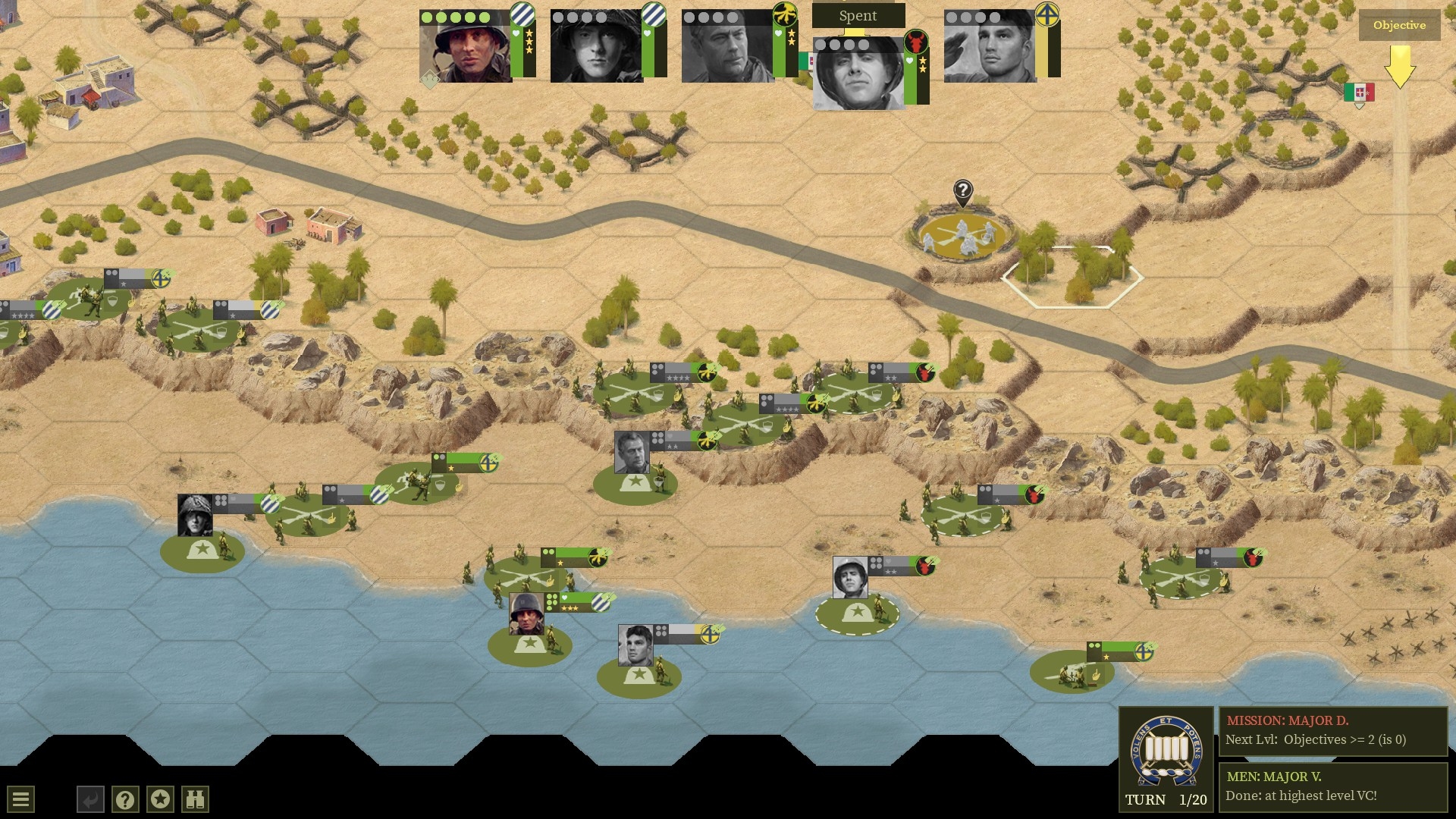
‘Can platoon leaders like Lieutenants Wilson and Stern be killed stone-dead by an unlucky, behind-the-scenes dice roll during combat?’. Partly because I don’t currently know the answer to this question, the engagements in Green Tree Games’ genre-blurring ‘leadership RPG’ are some of the most nerve-racking and resonant wargaming scraps I’ve ever choreographed. Because there’s a slim (?) possibility I might slay one of my officers by sending them into a potentially dangerous hex to rally a squad, lead an assault, or spot or scout, it’s impossible to issue such an order without palpable trepidation.
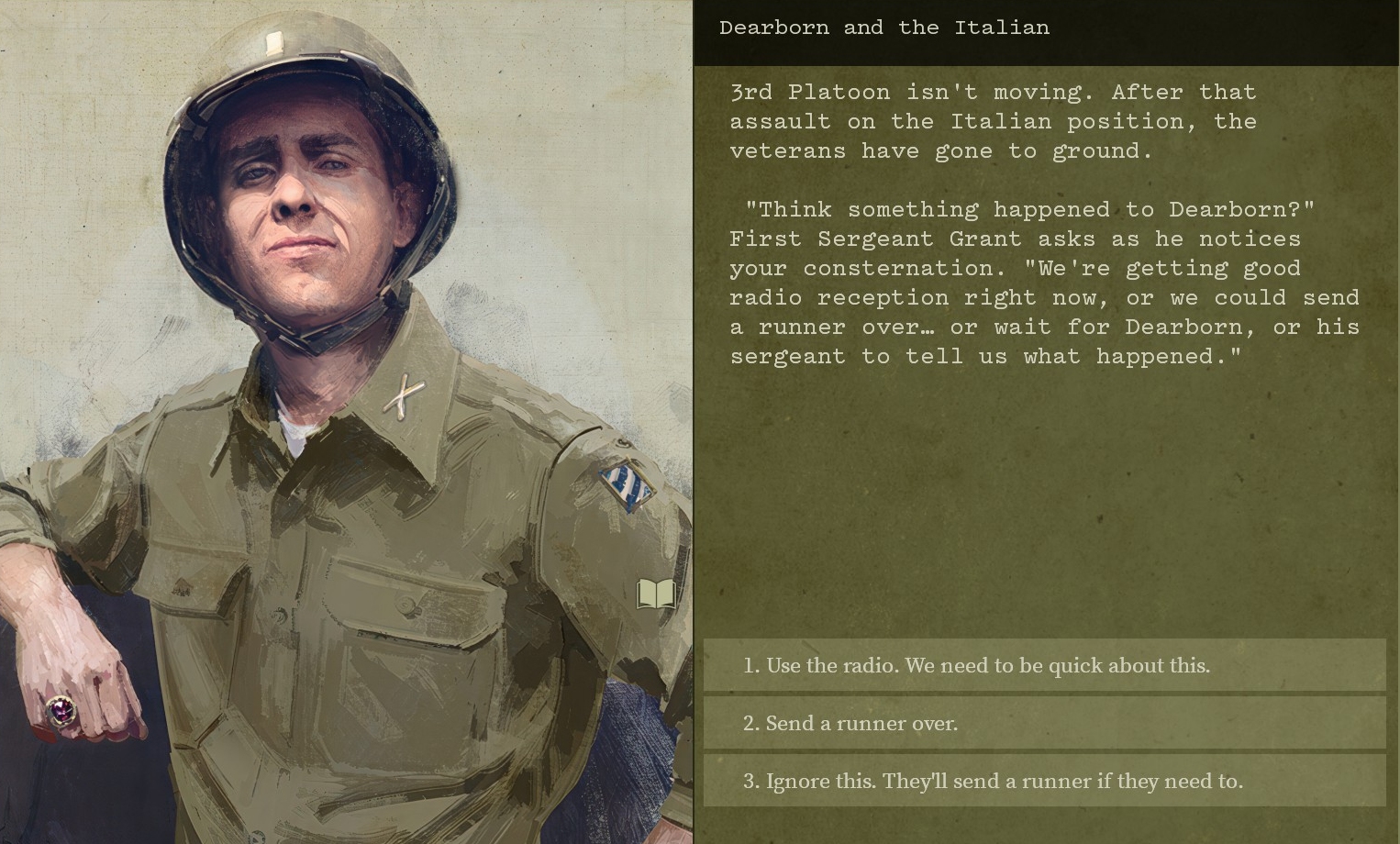
While the devs don’t manage to inject pathos into every ‘Cottonbaler’ casualty incident, computer wargames really don’t come any more powerful or thought-provoking than this one. Much of the game’s emotional, moral, and philosophical heavy-lifting is done with the chunks of high-quality interactive fiction that bookend and, sometimes, interrupt the missions. Consummately written and refreshingly cliche-free, these passages serve a multitude of intertwined purposes. As well as shaping key characters, binding you to your handful of platoon leaders, adding ambience and colour to battlefields, and enriching tactical decision-making, they allow GTG to communicate the grisly/cruel reality of war without resorting to graphic imagery.

In less capable hands BoC could very easily have ended up a game of two distinct, poorly mated halves. Thankfully, on the whole, the wordy and the hexy portions marry well. While I can recall one post-mission dialogue that felt a trifle weird in the light of the turn-based tussle I’d just overseen, usually there’s no discernible disconnect between the fiction and the action.
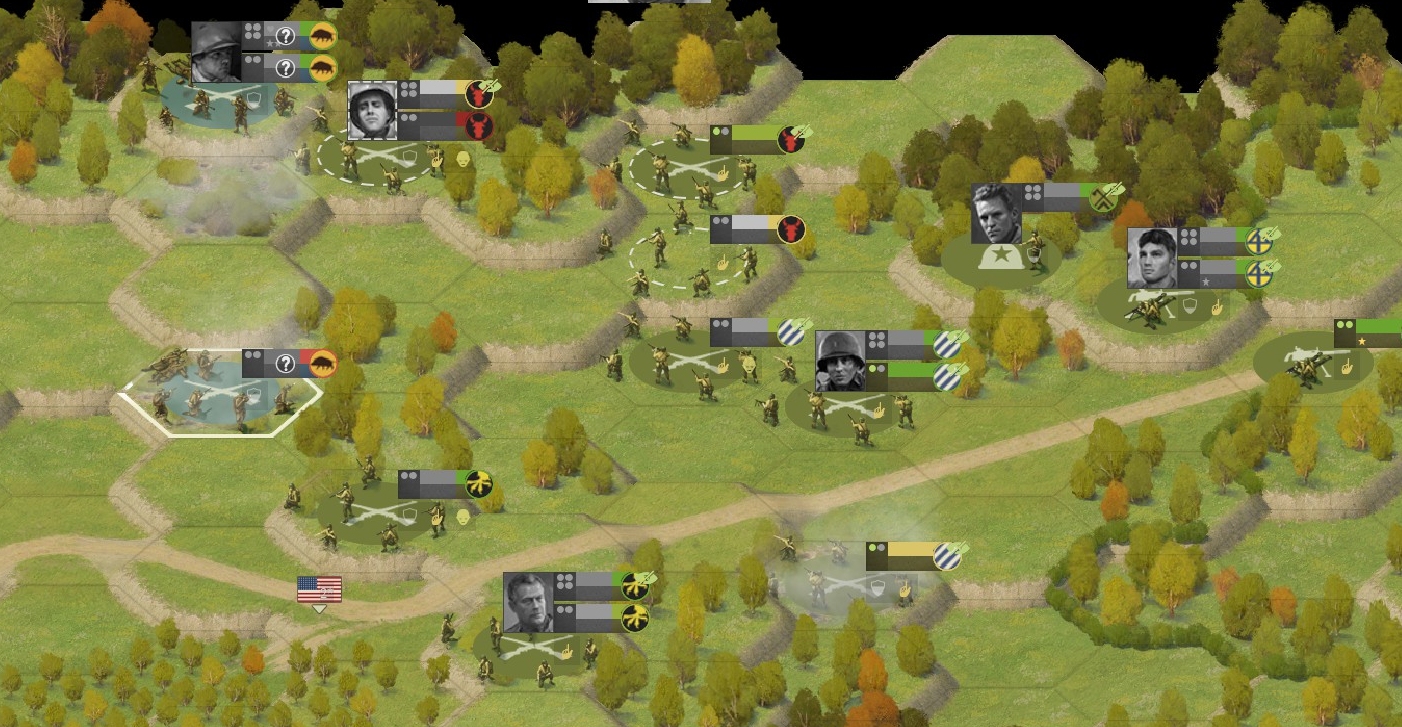
One of the highest compliments I can pay BoC is that if Luke Hughes had undergone an eleventh-hour crisis of confidence and decided to excise all the bookish bits before release, I’d still be able to wholeheartedly recommend his creation. As a straight tactical wargame, BoC has more than enough depth, truth, and character, to compete with the likes of The Troop, Second Front, and the Squad Battles.
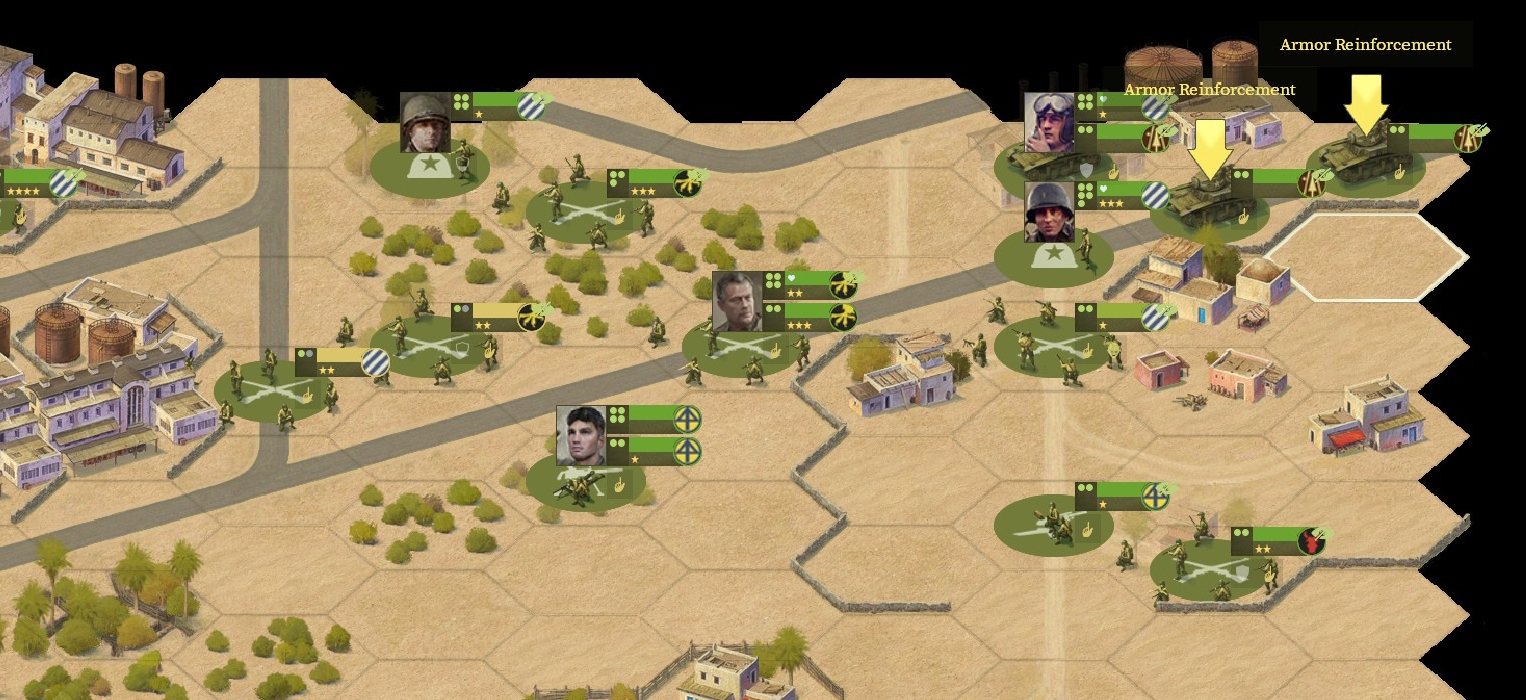
Much of that character stems from a novel order-rationing mechanic that, to me at least, makes perfect sense. While elsewhere in the genre, we generally get to use all our units every turn, here every squad activation depletes the order fund of the relevant platoon leader. Say you start a turn by moving a platoon leader into a hex occupied by one of their squads (there’s no stacking in BoC but squads and weapon teams can co-habit with a single leader) and then get that leader to ‘bolster’ (temporarily increase the morale) of the squad. If the officer in question started the turn with three orders, they’d be left with just one order at the end of these two steps. In other words, they’d only be able to activate one of their squads that turn.

More often than not, during scenarios the player can call on the services of a Captain too. As the Captain’s order dots may be used to activate any friendly unit on the battlefield, this partially offsets the impact of the platoon leader constraint. However, even with a Winters-esque figure aiding overworked Lieutenants, this remains a TBT where ‘How do I use my platoon leaders to best effect?’ is frequently a more thought-provoking question than ‘How do I use my firepower to best effect?’.
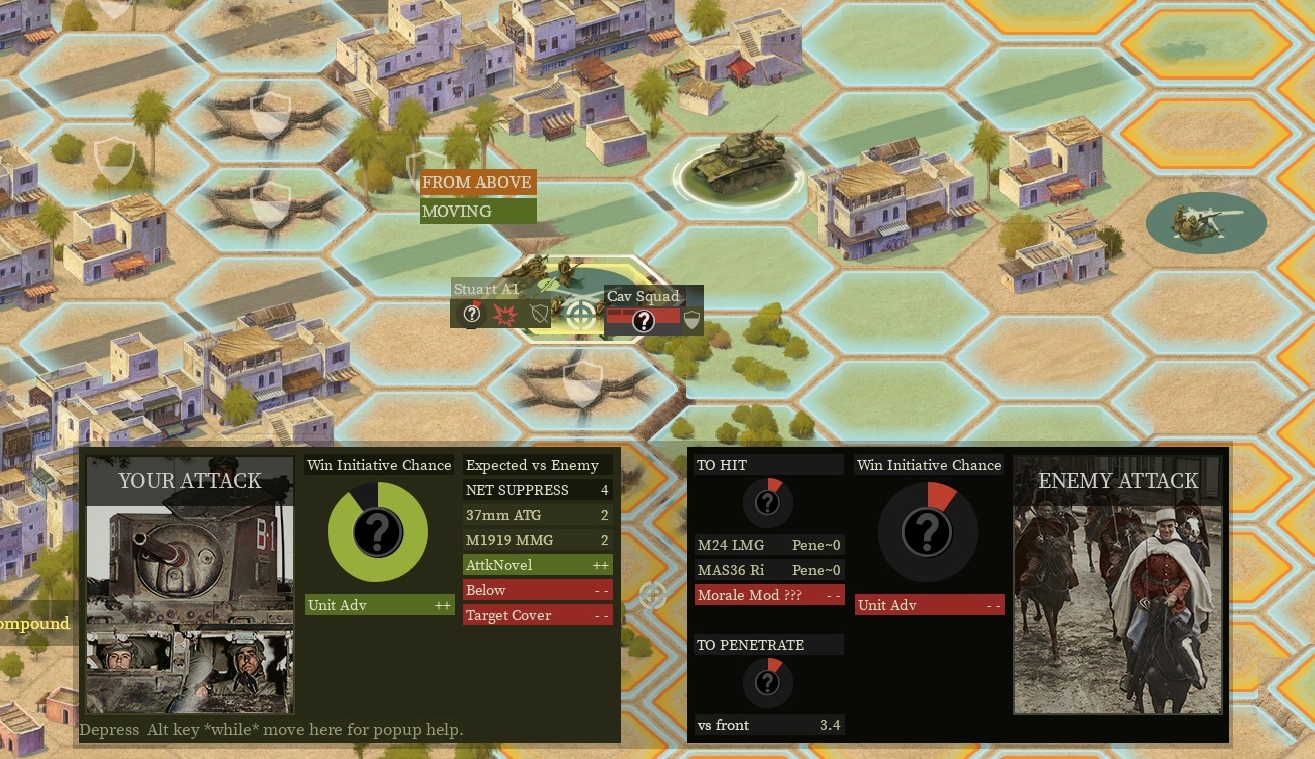
Green Tree Games’ fairly unorthodox approach to combat lethality and soldier psychology also helps BoC stand out from the herd. Heavily influenced by period studies, the game much prefers to spook and cow soldiers than top or wound them. Unless you make a habit of pushing units across open ground in range of unsuppressed foes or unscouted hexes, you’re probably not going to see red skulls* floating skywards that often. The red and yellow morale bars that restrict movement, erode fire efficacy, and sap order dots, are far more common sights.
* casualty indicators

Bolstering, rallying, and resting, are all crucial short-term tools for keeping squads moving and effective. Dealing with the deeper, more profound consequences of combat can only be done via text events and the ‘Aid your men’ screen available between engagements. Through the latter – a simplified stand-in for inter-mission politiking, training, and pastoral care – the player can, assuming they have the necessary ‘prestige’ and ‘loyalty’ points, do things like assign replacements and ameliorate combat fatigue.
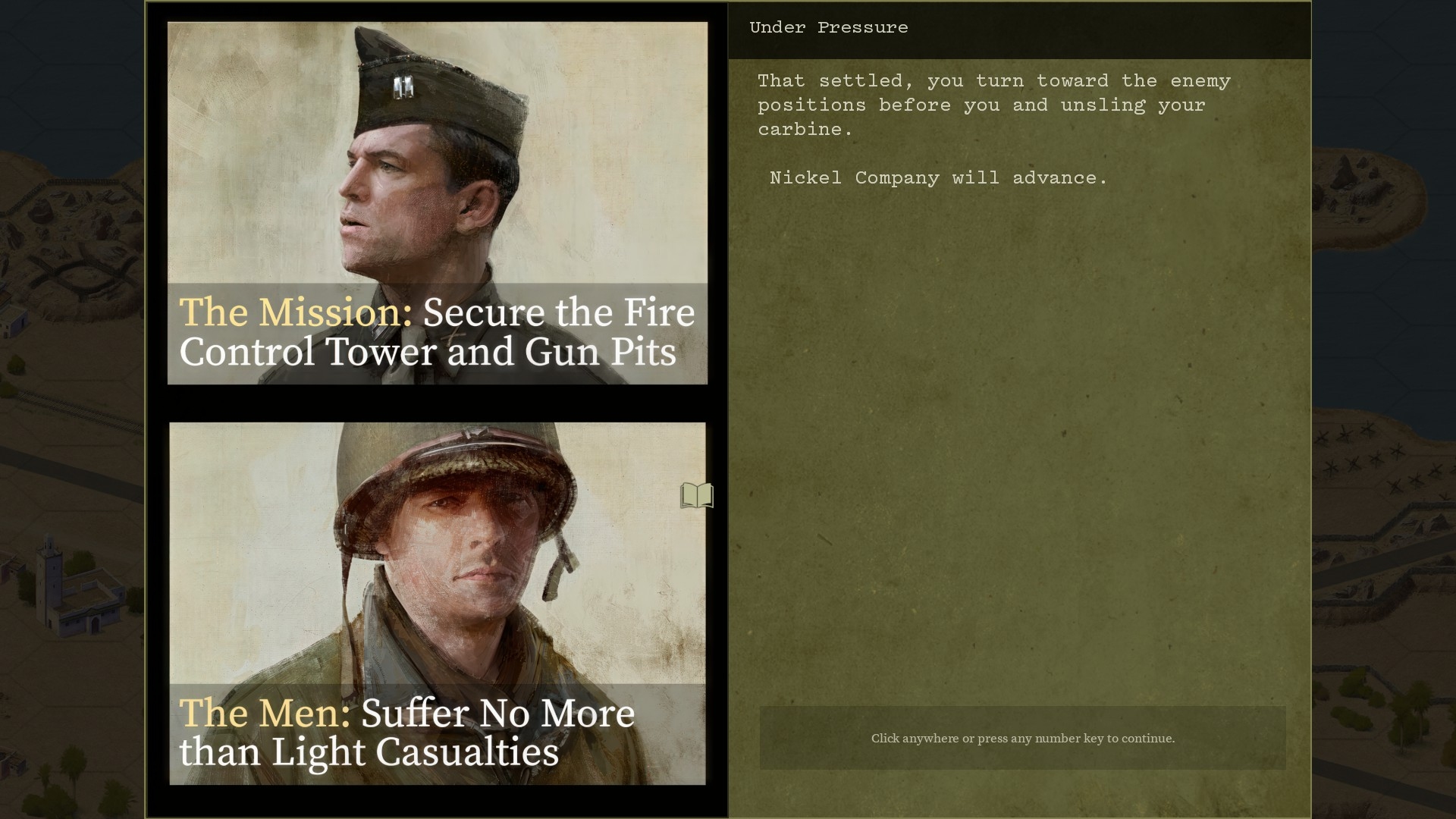
That dual currency system is one of the game’s cleverest bits of shorthand. Because the amount of ‘loyalty’ you earn at the end of a mission is linked to the number of men you lose, and ‘prestige’ is gained by successfully taking objectives specified by your superiors, there’s an ever-present tension between keeping the top brass happy and maintaining the trust of Nickel Company’s rank and file.
As I’m currently battling my way across Sicily with only around 20 hours of play under my belt, I’m not in a position to say anything really authoritative about campaign difficulty and AI sophistication yet. What I will say is that Fate seems to have furnished the Cottonbalers and, therefore, players like me, with a comparatively ‘gentle’ and helpful difficulty curve (Before tangling with German forces in Italy, the men of the 7th Infantry Regiment cut their teeth battling less formidable opposition – the Vichy French and Italians). That said, given decent cover and a few LMGs, even the lowliest foes can present problems.
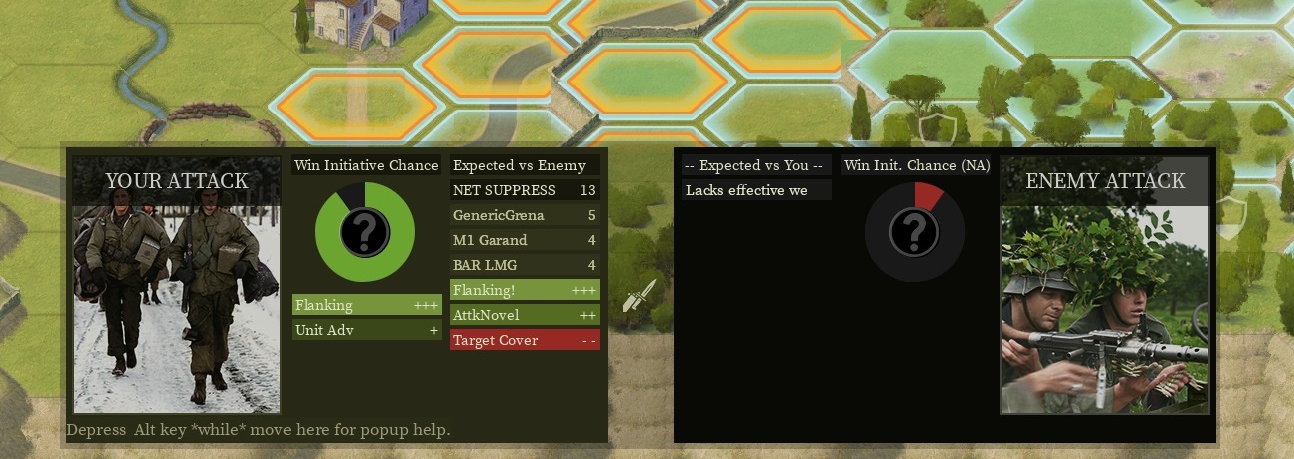
By the time part two of this assessment appears (ETA: Friday), I should have a better feel for the strengths and weakneses of the AI, and, slightly perversely, I hope to have experienced the odd mission failure too. Thus far I’ve somehow managed to do everything that has been asked of me without suffering horrendous losses or reaching for a save. Now my lads have started swapping lead and HE with the Heer, I fear insightful, innovative, intense Burden of Command might be about to reveal a harsher side.
(to be continued)

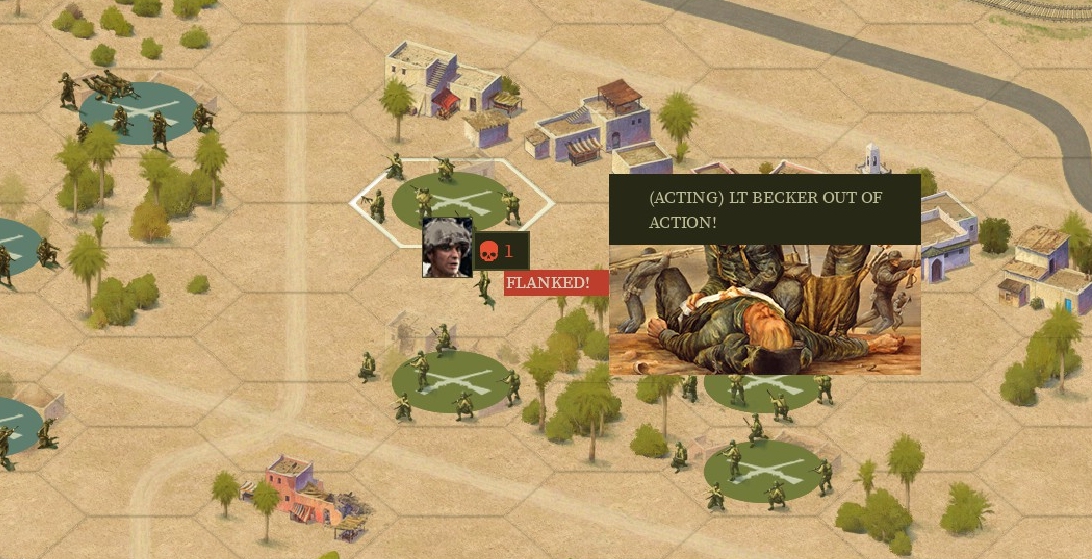
Sadly not for me. Not a fan of the “read and make choices” RPG mechanic and the attached wargame doesn’t grab me. When the concept of this title was first aired, I was hopeful that the “RPG” choices made would be folded into the gameplay in an organic way, rather than signposted and quantified. For example, say your sergeant gets wounded – I think a game could track your response to that fact without asking for an explicit answer or alerting you to the fact it is doing so. Future reactions to you by your commanders and subordinates to your decision could all be handled “under the hood”, so that the player makes a decision without breaking the immersion
An option to de-tooltip the ‘mindset’ decisions would be nice. While I don’t mind being told the implications of battlefield IF decisions (time extension, morale boost, arty support… etc) I agree the broader character and relationship choices could be presented less baldly.
Limited orders per leader make sense, but how deep is that modelled? A squad in a platoon will, in the absence of platoon commander instructions, act on the last received instructions or choose a different course of action.
Similarly a section will make its own decisions, seeking to align to the squad and platoon leader’s last known orders, but factoring in local conditions, changes in circumstance, physical and mental health, etc.
Does Burden of Command recognise this devolved autonomy?
Squads will ‘opportunity fire’ without instructions, and halt moves prematurely if their morale goes to pieces, but that’s the limit of their independence. Isolated or leaderless squads making their own decisions would be a great (optional?) feature, but I think BoC captures the chaos and challenges of WW2 battle incredibly well without it.